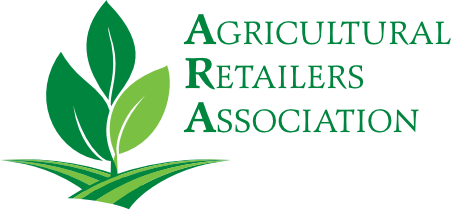FAQs on EPA's Chlorpyrifos Final Rule + 6 Ag Retailer Questions Answered
Sep 21 2021
ARA received notice from the U.S. Environmental Protection Agency (EPA) that it has published the chlorpyrifos final rule FAQs, which can be accessed through the chlorpyrifos main web page. These questions represent the most commonly asked questions EPA received since issuing the final rule. All but six of ARA’s questions were answered in the FAQs. For those six remaining questions, below are EPA’s responses.
ARA Action
ARA is participating in several stakeholder calls later today for further discussions on how the industry can respond to EPA’s decision related to revoking all tolerances for chlorpyrifos and its impact on other pesticide products.
Are you aware of current registrants conducting a recall of this product?
The Agency is not aware of any registrants conducting a recall of chlorpyrifos products and does not have any plans to issue a recall at the moment. Registrants may submit voluntary cancelations to EPA at any time. FIFRA § 19(b) gives EPA the authority to recall pesticide products if the registration of a pesticide has been suspended and cancelled and EPA finds that a recall is necessary to protect public health or the environment. Where the product registration has been suspended or cancelled, EPA will request either a voluntary or mandatory recall. When EPA believes that a recall is necessary to protect public health or the environment and the product registration has not been suspended or cancelled, EPA may request an informal recall, which is also voluntary. EPA only requests a recall where the evidence clearly supports the need for such action. EPA will base the decision that a product should be withdrawn from the market on information in the sample file, including laboratory analyses, staff evaluations and opinions, and other available information. All information supporting a recall decision would be included in the official file.
Can chlorpyrifos still be applied on corn and soybeans if they are only used in ethanol or biodiesel production?
If residues exist in food that is not covered by a tolerance or tolerance exemption, that food is adulterated and cannot be distributed in interstate commerce. The Food and Drug Administration (FDA) enforces violations of the Federal Food, Drug, and Cosmetic Act (FFDCA) involving adulterated food. For additional information on FDA’s enforcement of the FFDCA for crops that are distributed for both food and for non-food purposes, please contact the Center for Food Safety and Applied Nutrition at FDA (CFSANTradepress@fda.hhs.gov).
Does EPA have a list of alternative pesticide products available for crops and feed being impacted?
For alternative pesticide products available for crops and feed being impacted by the chlorpyrifos tolerance revocation, please refer to the following memorandum: Revised Benefits of Agricultural Uses of Chlorpyrifos.
Can agricultural retailers still sell chlorpyrifos for use in crop production following the current label?
Chlorpyrifos products are still currently registered and available for sale and distribution. The tolerance rule issued on August 18, 2021, does not prohibit sale and distribution of registered pesticide products. However, once the tolerances expire and are revoked in six months, sale and distribution of chlorpyrifos products labeled for use on food crops would be considered misbranded; therefore, it would be a violation of FIFRA to sell and distribute those products. Products that are labeled only for non-food uses can be continued to be sold, distributed and used for those non-food uses. Products with labels that contain food uses cannot be sold or distributed after the tolerances expire. Products in the hands of users may continue to be used for labeled food uses until the tolerances expire and may be used for labeled non-food uses after the tolerances expire. Products labeled for only food-uses cannot be repurposed for non-food uses, since that would be a violation of the label on those products.
When does the revocation of tolerances fully go into effect and how will it be enforced / implemented by EPA and FDA?
Tolerances expire February 28, 2022, six months after the final rule published in the Federal Register.
EPA enforces requirements under FIFRA that govern the distribution, sale and use of pesticides. EPA takes enforcement actions to address the distribution or sale of unregistered pesticides, registered pesticides whose composition differs from that submitted at registration, and registered pesticides that are misbranded or adulterated. EPA may also stop the sale or seize pesticide products which do not meet FIFRA requirements.
EPA and the states verify FIFRA compliance through a comprehensive FIFRA compliance monitoring program which includes inspecting facilities, reviewing records and taking enforcement action where necessary. The FIFRA compliance assistance program provides businesses, federal facilities, local governments and tribes with tools to help meet environmental regulatory requirements.
Enforcement actions may be determined by the FIFRA Enforcement Response Policy, which identifies the appropriate enforcement response and penalty amount for FIFRA violations.
If this product can continue to be used for non-food uses such as mosquito control, in parks, golf courses, etc. Will EPA be imposing additional label restrictions to minimize any potential impact on children playing in parks or spending time on golf courses?
Per the Revised Human Health Risk Assessment for Registration Review, residential post-application exposures can occur for adults and children golfing on chlorpyrifos-treated golf course turf and from contacting treated turf following a mosquitocide application. There are no residential post-application risk estimates of concern for adults or children from chlorpyrifos use on golf course turf or as a mosquitocide on the day of application. EPA will continue to evaluate the non-agricultural, non-food uses as part of the ongoing registration review for chlorpyrifos, which is expected to be completed by 2022.
